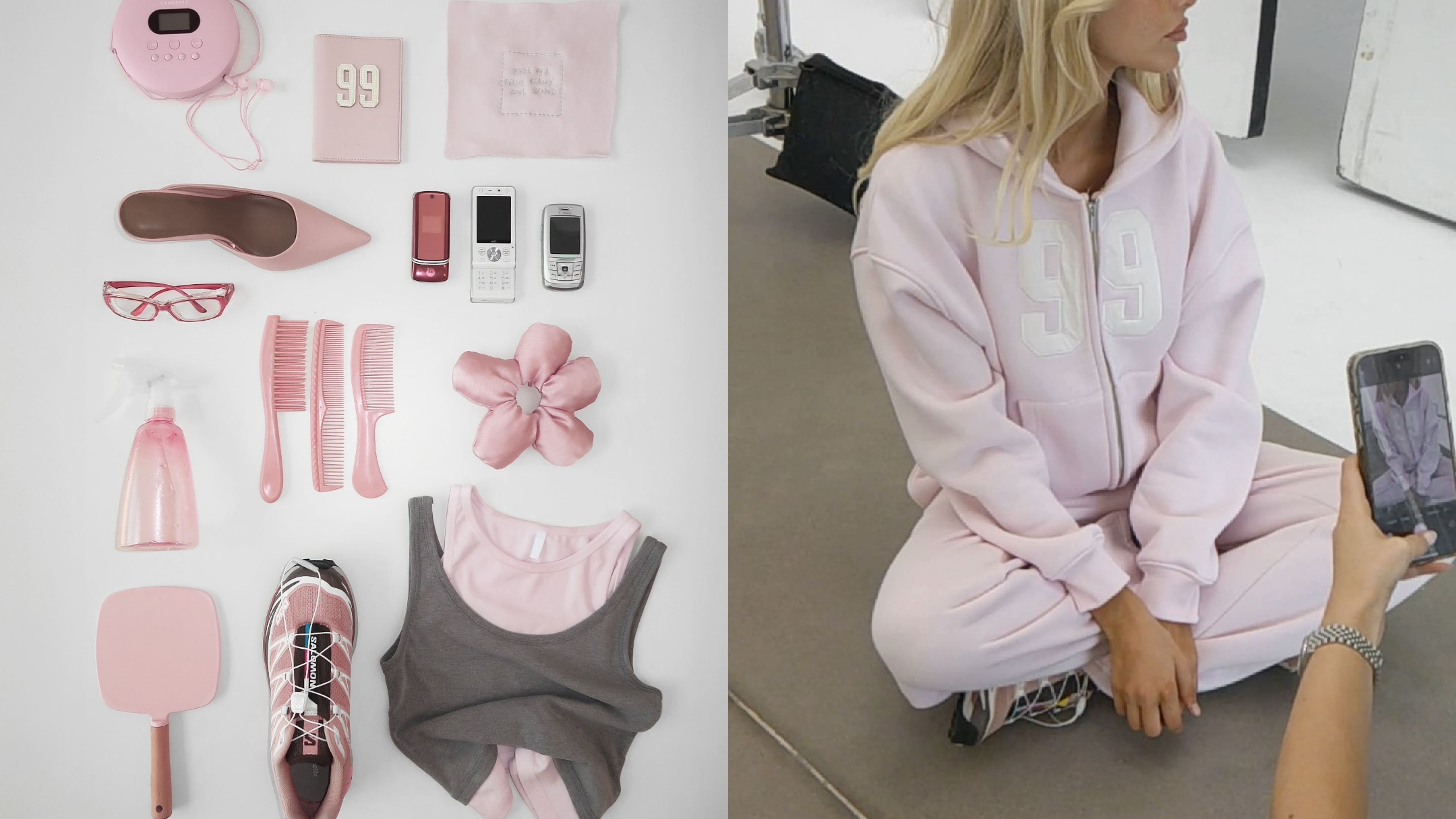The debate surrounding sustainable fashion has reached a boiling point, with discussions centred on the environmental impact of the industry and the accessibility of lower-impact alternatives. However, this discourse has often been mischaracterised as elitist, unfairly dismissing the concerns of those advocating for a more conscious and responsible approach to fashion. With the rise in demand for environmentally friendly options, it is clear that consumers want sustainable fashion, but they are not always willing to pay a premium for it.
The current pandemic has fuelled a new eco-consciousness among consumers, with surveys showing that a significant percentage consider sustainable materials and brand promotion of sustainability when making clothing purchases. However, less than a third of consumers are willing to pay more for eco-friendly products. This challenges sustainable fashion to break free from its perception as an expensive luxury. The key lies in creating enough demand to drive prices down and make sustainable fashion more affordable.
The Complex Dynamics of Fast Fashion
Criticism of the fashion industry's impact frequently focuses on fast-fashion labels, which offer affordable clothing but are associated with exploitative labour practices, excessive waste, and overconsumption. While these brands have played a role in democratising fashion, the negative consequences cannot be ignored. The critique of fast fashion is not intended to shame or alienate lower-income consumers but to address the systemic issues within the industry.
The Affordability Dilemma
One of the main points of contention arises from the perception that sustainable fashion is expensive and unattainable for many. Some sustainable brands may carry higher price tags due to responsible production costs or sustainability exploitation as a marketing strategy. However, affordability and sustainability are not mutually exclusive. Initiatives like thrift shopping, clothing repair, and mindful consumption are accessible alternatives that promote sustainable practices without breaking the bank.
The Fallacy of "Sustainable" Luxury
Luxury fashion often touts itself as more environmentally friendly and ethically conscious than fast fashion. However, this claim is not always supported by reality. Luxury brands may prioritise their image while remaining opaque about their supply chain and labour conditions. Despite their higher price points, luxury brands can still contribute to exploitation and pollution, highlighting the need to critically examine the entire industry rather than just one segment critically.
Shared Responsibility and Consumer Behaviour
Sustainable fashion advocates emphasise that the focus should be on changing consumer habits rather than solely on the products being purchased. Embracing a more mindful and responsible approach to fashion does not require constant consumption or exclusively buying expensive items. The key lies in extending the lifespan of clothing, reducing waste, and supporting brands that prioritise ethical practices. Consumer choices shape demand, and by collectively demanding change, we can drive the industry towards more sustainable practices.
The Role of Regulation
Addressing the sustainability issue in fashion requires comprehensive regulation that shifts responsibility from consumers to brands. Effective regulations can standardise sustainable practices, promote transparency, and hold the industry accountable. By establishing a regulatory framework, the complexities of the sustainability debate can be clarified, creating a fairer and more just system that benefits both consumers and the environment.
Actions Speak Louder than Words
Some brands, such as Ninety Percent, are already working towards making sustainable fashion more accessible. Positioned between fast-fashion and contemporary brands, Ninety Percent offers clothing at fair prices while committing to giving 90 percent of its profits to charity. By owning their factory and ensuring fair wages and health insurance for garment workers, the brand achieves affordability without compromising sustainability. While certain premium materials and lower production volumes might lead to slightly higher prices for some items, they are still more affordable than other contemporary labels.
Fast fashion brands like H&M have an advantage in pricing due to their large-scale production. H&M's Conscious collection, featuring garments made from sustainably sourced materials, offers T-shirts at affordable prices. The brand aims to make sustainable fashion accessible to everyone and invests in new technologies to bring more sustainable materials to scale. However, H&M has faced accusations of "greenwashing" and concerns about the treatment of garment workers. Campaigners emphasise the need for concrete commitments to ensure fair wages throughout the supply chain.
Branding in the Context of Sustainable Fashion
Branding plays a crucial role in the context of sustainable fashion, and brand owners need to consider sustainability when building their brands. Incorporating sustainability into the brand identity can have various implications, challenges, suggestions, and lessons.
By aligning a brand with sustainability, brand owners can establish a positive reputation and differentiate themselves in the market. Sustainability-focused branding can attract eco-conscious consumers and build brand loyalty. It also demonstrates a brand's commitment to social and environmental responsibility.
One of the critical challenges is maintaining authenticity and credibility. Greenwashing, which refers to misleading sustainability claims, can undermine a brand's reputation. Brand owners must ensure their sustainability initiatives are genuine, transparent, and backed by credible certifications or third-party verification. Balancing sustainability with affordability is another challenge, as it requires finding ways to make eco-friendly products accessible without compromising quality or pricing.
When building a sustainable fashion brand, brand owners should consider the following suggestions:
- Define sustainability goals: Clearly define the brand's sustainability goals and values, ensuring they align with its identity. This will provide a clear direction and focus for sustainability initiatives.
- Supply chain transparency: Ensure transparency throughout the supply chain, from sourcing raw materials to production and distribution. Communicate this transparency to consumers, highlighting ethical practices and responsible sourcing.
- Innovative materials and processes: Explore and adopt innovative materials and manufacturing processes that minimise environmental impact. Communicate the use of sustainable materials and the associated benefits to consumers.
- Engage consumers: Educate and engage consumers about the importance of sustainable fashion and the brand's efforts. Create compelling storytelling around sustainability initiatives, emphasising the optimistic impact consumers can make by choosing the brand.
- Collaborations and partnerships: Collaborate with like-minded organisations, NGOs, or experts in the sustainability field. Partnering with influential figures or celebrities passionate about sustainability can amplify the brand's message.
Sustainable fashion branding requires a long-term perspective and commitment. Here are a few critical lessons for brand owners:
- Authenticity is vital: Building consumer trust requires genuine sustainability commitment. Greenwashing or inconsistent actions can lead to reputational damage.
- Consumer education is essential: Many consumers are still unaware of the environmental and social impact of the fashion industry. Brands can play a role in educating consumers about sustainability issues and the importance of conscious consumption.
- Collaboration and industry-wide change: Sustainable fashion is a collective effort. Brands should collaborate and advocate for systemic changes to address challenges such as fair wages, circularity, and reducing waste.
- Continual improvement: Sustainability is a journey, and brands should continuously strive to improve their practices. Regularly assess and update sustainability goals, track progress, and communicate these efforts to consumers.
Final Thoughts
Labelling sustainable fashion as elitist oversimplifies a multifaceted issue that demands collective responsibility and action. The debate surrounding sustainability in fashion should not be reduced to an "us versus them" narrative. Instead, it calls for a nuanced understanding of the challenges faced by the industry, the accessibility of sustainable alternatives, and the need for systemic change. By dismantling misconceptions and embracing a holistic approach, we can foster a fashion industry that is both environmentally conscious and accessible to all.
Editor's pick: Bette Vest

Sustainably crafted from organic cotton, this cropped vest is cut for a slim fit with a narrow racerback and minimal crew ribbed neckline and armholes. The rib fabric is flattering and stretchy, giving you more comfort to wear every single day.






.svg)


.svg)
.svg)






